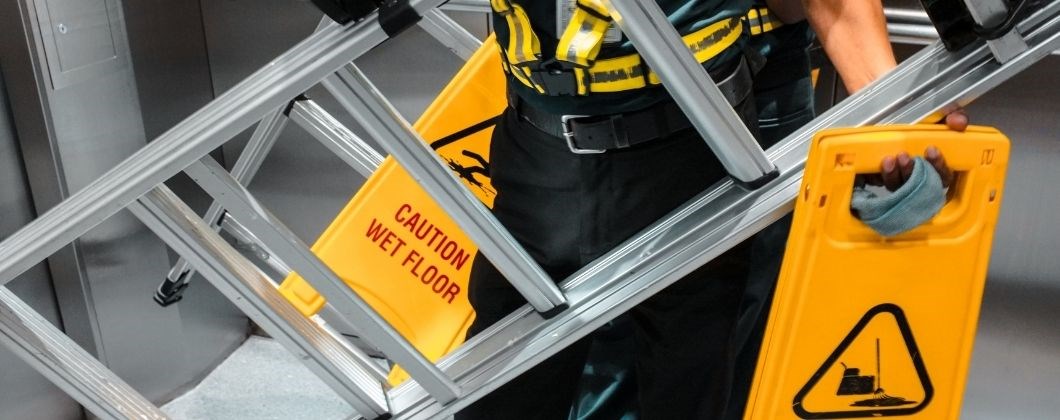Construction Risk Fundamentals: Ladder Safety

Falls from elevated surfaces are one of the most common causes of accidents in the construction industry. Most of these accidents occur due to failure to follow basic ladder safety. To help prevent ladder injuries on-site, practise the following safety tips.
Setting up Safely
Make sure that you select the correct ladder for the job – check the length and duty rating. The proper length is a minimum of one metre extending over the roofline or working surface.
Inspect your ladder before each use for loose or damaged:
- Steps
- Rungs
- Spreaders
- Rung attachments
- Safety feet
- Other parts
Clear the area where you will be working. Never place a ladder in front of a door that isn’t locked, blocked or guarded.
Because metal ladders conduct electricity, use a wooden or fibreglass ladder near power lines or electrical equipment.
Check that all the locks on extension ladders are properly engaged before placing your ladder on a steady surface. The ground underneath the ladder should be level and firm. Large, flat wooden boards braced underneath a ladder can help to level it on an uneven surface or soft ground. The correct angle for straight, single or extension ladders is 75 degrees or a base to height ratio of 1:4.
Use Caution
Always use caution when using a ladder at your construction site and do not use a ladder for any other purpose than intended.
Other safety considerations include:
- Make sure that the weight that your ladder is supporting does not exceed its maximum load rating (user plus materials). And only one person should be on a ladder at a time.
- Keep your body centred between the rails of the ladder at all times. Do not lean too far to the side while working. Never over-reach – instead, descend from the ladder and move it to a better position.
- Do not step on the top step, bucket shelf or attempt to climb or stand on the rear section of a step-ladder.
- Always face the ladder when climbing up or down. Never leave a raised ladder unattended.
- Slowly step down from a ladder if you feel dizzy or tired.
- Non-slip footwear should be worn at all times when on a ladder at a construction site.
Our construction specialist risk managers can provide a range of services to help improve worker safety on your building site - which in many cases can reduce your insurance premium as well as protect your people.
Call us on 028 9099 3600 today
